Table of Contents
Come join us now, and enjoy playing your beloved music and browse through great scores of every level and styles!
Can’t find the songbook you’re looking for? Please, email us at: sheetmusiclibrarypdf@gmail.com We’d like to help you!
Bill Evans – Never Let Me Go Transcription Solo on Alone sheet music, Noten, partitura, spartiti, 楽譜
Best Sheet Music download from our Library.
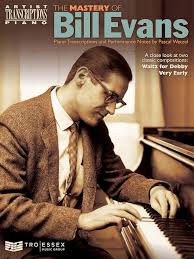
Please, subscribe to our Library.
If you are already a subscriber, please, check our NEW SCORES’ page every month for new sheet music. THANK YOU!
Browse in the Library:
Or browse in the categories menus & download the Library Catalog PDF:
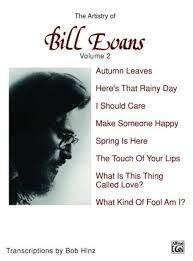
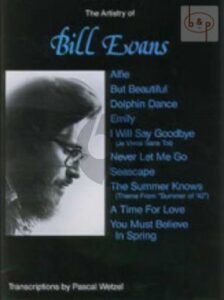

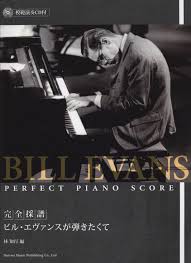
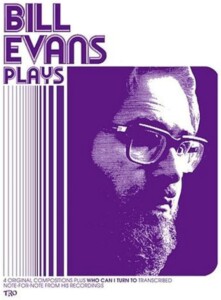
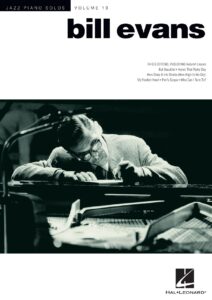




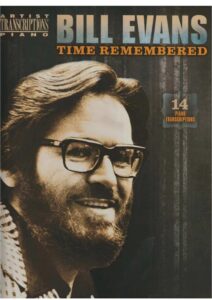
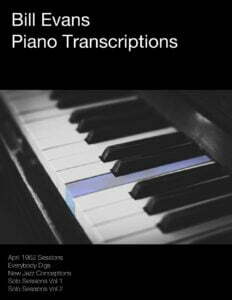
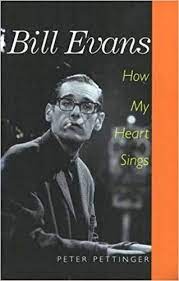
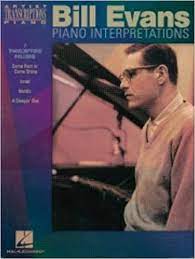
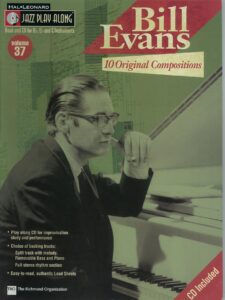
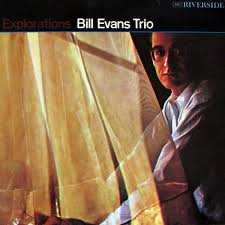


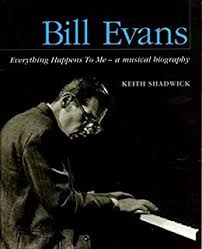
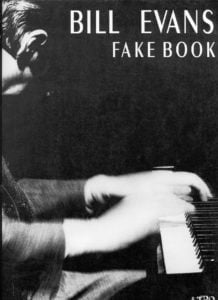

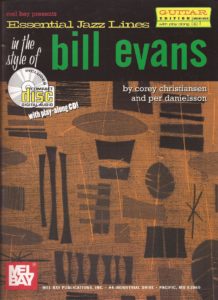
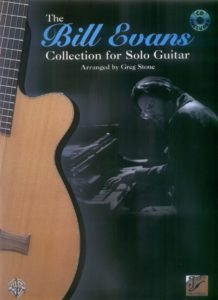
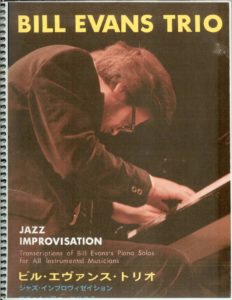
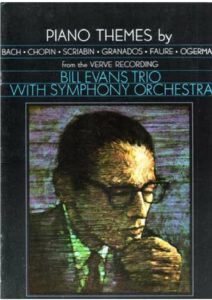
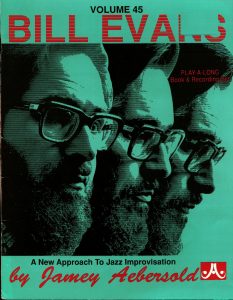
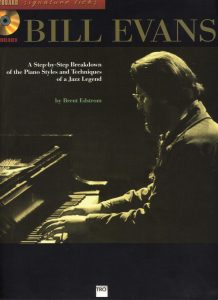

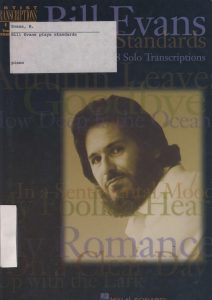

Bill Evans: The Poet of the Piano and Architect of Modern Jazz Harmony
Bill Evans (1929-1980) wasn’t just a jazz pianist; he was a seismic force who reshaped the landscape of the music. His introspective lyricism, revolutionary harmonic conception, and profound approach to ensemble interplay, particularly within the piano trio format, left an indelible mark on jazz and influenced generations of musicians across genres. To delve into Evans is to explore the deep interiority of jazz, where emotion, intellect, and sheer sonic beauty converge with unparalleled grace and complexity.
Biography: A Life of Beauty and Struggle
- Early Years & Formative Influences (1929-1955): Born William John Evans on August 16, 1929, in Plainfield, New Jersey, Bill was immersed in music from childhood. Both parents were musicians, and he began piano lessons at age 6, later studying flute and violin. His classical training was rigorous, including studies at Southeastern Louisiana University and Mannes School of Music in New York. However, jazz captivated him early, particularly the pianism of Nat King Cole, Bud Powell, and Lennie Tristano. He also absorbed the harmonic language of composers like Ravel, Debussy, and Scriabin, which would become foundational to his sound. After a stint in the Army (1951-1954), he plunged into the New York jazz scene.
- Breakthrough & Miles Davis Quintet (1955-1958): Evans quickly gained respect among musicians for his sophisticated harmonic knowledge and unique touch. He played with notable figures like Tony Scott, Charles Mingus, and George Russell (contributing significantly to Russell’s “Lydian Chromatic Concept”). His big break came in 1958 when Miles Davis invited him to join what would become one of the most legendary ensembles in jazz history: the Miles Davis Sextet (alongside John Coltrane, Cannonball Adderley, Paul Chambers, and Jimmy Cobb). Evans’ contribution was pivotal to the sound and conception of Kind of Blue (1959), the best-selling jazz album of all time and a landmark in modal jazz. His introspective, impressionistic harmonies provided the perfect counterpoint to Davis’s sparse lyricism and Coltrane’s searching intensity. Though he left the band before its official release (partly due to the demanding lifestyle and racial tensions of the era), his influence permeates the album.
- The First Trio & Tragedy (1959-1961): Forming his own trio became Evans’ primary focus. His initial trio with bassist Scott LaFaro and drummer Paul Motian proved revolutionary. This wasn’t piano with accompaniment; it was a true conversation among equals. LaFaro’s unprecedented melodic and contrapuntal bass playing interacted with Evans’ piano lines in a breathtakingly fluid and empathetic dialogue, supported by Motian’s subtle, interactive drumming. Albums like Portrait in Jazz (1960) and the live recordings at the Village Vanguard (Sunday at the Village Vanguard, Waltz for Debby, both 1961) captured this telepathic interplay at its zenith. Tragically, Scott LaFaro died in a car accident just ten days after the Vanguard sessions. Evans was devastated, both personally and musically. The loss of his closest musical partner cast a long shadow.
- Rebuilding & Middle Period (1962-1973): After a period of profound grief and withdrawal, Evans slowly returned to performing and recording. He formed a new trio with bassist Chuck Israels and, later, Gary Peacock, Larry Bunker, and eventually the long-tenured drummer Marty Morell (who joined in 1968). Bassists included Eddie Gomez (1966-1977), who developed another remarkably close musical relationship with Evans. While the magical equality of the first trio was unique, Evans continued to refine his concept. Albums like Conversations with Myself (1963, featuring groundbreaking overdubbed piano solos), Trio ’64, Alone (1968, a solo masterpiece), and numerous live recordings showcase his evolving depth, harmonic daring, and unwavering commitment to lyrical expression. This period solidified his reputation as a leading voice in jazz.
- Final Years & Decline (1974-1980): The later years were marked by both artistic triumphs and personal struggles. His final trio with bassist Marc Johnson and drummer Joe LaBarbera (formed in 1978) is often hailed as a return to the interactive heights of the first trio, captured brilliantly on albums like The Paris Concert, Edition One & Two (1979) and Turn Out the Stars: The Final Village Vanguard Recordings (June 1980). Evans’ playing reached new levels of maturity, intensity, and harmonic freedom. However, a lifelong battle with heroin addiction, and later cocaine, took a severe physical toll. Despite periods of recovery, his health deteriorated significantly. Bill Evans died on September 15, 1980, from complications of cirrhosis, ulcers, and pneumonia, exacerbated by drug abuse. He was 51.
Music Style: Lyricism, Harmony, and Interplay
Evans’ style is instantly recognizable:
- Lyricism & Touch: His playing sang. He possessed an extraordinary touch – light, nuanced, capable of immense tenderness and introspective beauty. Melodies flowed with a natural, vocal quality, often imbued with a poignant melancholy or quiet joy. He avoided pyrotechnics, favoring emotional depth and melodic invention.
- Revolutionary Harmony: This is where Evans made his most profound impact. He radically expanded jazz harmony:
- Modal Influences: His work with Miles Davis deeply ingrained modal concepts, moving away from dense bebop chord changes towards scales and modes as harmonic foundations, allowing for greater melodic freedom and harmonic color.
- Impressionism: He masterfully integrated the rich, extended harmonies of Debussy and Ravel – chords built in 4ths, added 6ths, 9ths, 11ths, 13ths, and alterations. He loved the lushness of major 7th and minor 9th chords.
- Rootless Voicings: Perhaps his most famous contribution. Evans often voiced chords without the root note in his left hand, leaving that for the bassist. His left hand played tightly clustered intervals (like 3rds, 7ths, 10ths) higher up the keyboard, creating complex, ambiguous, and incredibly rich harmonic textures that floated above the bass foundation. This allowed for greater harmonic density without muddiness and facilitated smoother voice-leading.
- Harmonic Rhythm & Reharmonization: He had an uncanny ability to subtly reharmonize standard tunes, inserting unexpected chord substitutions or altering the harmonic rhythm (the rate at which chords change) to create surprise and fresh emotional landscapes. He treated harmony as a constantly shifting, colorful palette.
- Rhythmic Sophistication: Evans’ time feel was subtle and complex. He employed a gentle but insistent swing, often playing slightly behind the beat, creating a sense of relaxed intensity. He used cross-rhythms and polyrhythms with great subtlety, layering rhythmic ideas within his lines and comping.
- The Trio Concept: Evans redefined the piano trio. He moved away from the “piano soloist with rhythm section” model towards a fully interactive chamber ensemble. Bassists and drummers became equal melodic and rhythmic conversationalists. His trios focused on collective improvisation, dynamic interplay, and a shared responsibility for shaping the music’s contour and emotion. The empathy within his best trios (especially the first and last) remains legendary.
Improvisational Language: Building Beauty Note by Note
Evans’ improvisations were architectural marvels, built with logic, lyricism, and harmonic sophistication:
- Motivic Development: He excelled at taking a small melodic fragment (a motif) and developing it logically throughout a solo – transposing it, inverting it, rhythmically displacing it, or harmonizing it differently. This gave his solos a strong sense of unity and narrative.
- Lyrical Phrasing: His lines were inherently melodic, often resembling composed songs. He prioritized melodic contour and singable phrases over sheer velocity.
- Harmonic Targeting: Evans navigated complex changes with uncanny precision. He targeted specific chord tones (like the 3rd, 7th, 9th, or #11) to outline the harmony clearly, even amidst substitutions. He used approach patterns (chromatic neighbor tones, enclosures) to gracefully land on these target notes.
- Use of Scales & Modes: Beyond major and minor, he fluently incorporated melodic minor, harmonic minor, diminished, whole-tone, and various synthetic scales, often derived from the chord’s extensions or alterations.
- “Licks” vs. Concept: While Evans had characteristic devices, his genius lay in organic development rather than relying on pre-formed licks. However, some recurring elements include:
- Chromatic Enclosures: Wrapping around a target note chromatically (e.g., playing the note above and below before landing on it).
- Triadic Superimposition: Playing simple triads over complex chords to create specific tensions or colors (e.g., a major triad a half-step above the root).
- Fourths-Based Lines: Lines built from intervals of a fourth, creating an open, modern sound.
- Delayed Resolutions: Creating tension by slightly delaying the resolution of a dissonance.
Chord Progressions and Harmony: The Evans Palette
Evans didn’t just play chords; he painted with them. His harmonic language permeated his compositions and his interpretations of standards:
- Reharmonization Master: He constantly reimagined the harmonic structure of standards. A simple II-V-I progression might be transformed with passing chords, tritone substitutions, modal interchange (borrowing chords from parallel keys), or altered dominants. His version of “Someday My Prince Will Come” or “Autumn Leaves” are masterclasses in reharmonization.
- Modal Interchange (Borrowed Chords): He frequently borrowed chords from the parallel minor or major scale (e.g., using a iv minor chord in a major key, or a bVI major chord).
- Tritone Substitution: Replacing a dominant 7th chord with another dominant 7th chord a tritone away (e.g., substituting Db7 for G7). Both share the same 3rd and 7th, creating smooth voice-leading.
- Extended Diatonic Harmony: Using chords built on almost every scale degree (IVmaj7, vi7, iiø7, iii7, etc.) and stacking extensions (9ths, 11ths, 13ths) liberally but tastefully.
- Chromatic Passing Chords: Inserting chords that move chromatically between diatonic chords to create smoother or more colorful transitions.
- Pedal Point: Sustaining a single note (often in the bass) while harmonies change above it, creating tension and release.
- Block Chord Style: Though less frequent than his contrapuntal lines, he could deliver powerful, harmonically rich block chord passages (influenced by George Shearing), often moving in parallel motion.
Influences: Roots of a Unique Voice
Evans synthesized diverse influences into his singular style:
- Jazz: Nat King Cole (touch, lyricism), Bud Powell (bebop language), Lennie Tristano (counterpoint, intellectual approach), Horace Silver (bluesy touch), George Shearing (block chords).
- Classical: Claude Debussy, Maurice Ravel, Alexander Scriabin, Igor Stravinsky, Béla Bartók (impressionist harmony, modal scales, complex textures, rhythmic innovation, emotional depth).
- Popular Song: The Great American Songbook (Gershwin, Kern, Rodgers & Hart/Hammerstein, etc.) provided the core repertoire he so masterfully transformed.
Legacy: The Enduring Resonance
Bill Evans’ influence is vast and inescapable in modern music:
- Pianists: Herbie Hancock, Chick Corea, Keith Jarrett, Brad Mehldau, Fred Hersch, Lyle Mays, Alan Pasqua, and countless others directly cite his profound impact on their harmonic conception, touch, and trio approach.
- Musicians Beyond Piano: His harmonic language influenced composers and improvisers across all instruments – John Coltrane, Wayne Shorter, Pat Metheny, and many contemporary artists in jazz and beyond.
- Jazz Harmony: His concepts, especially rootless voicings, modal interchange, and sophisticated reharmonization, became fundamental vocabulary in jazz education and practice.
- Trio Format: He established the modern interactive piano trio as a premier format for sophisticated jazz exploration.
- Emotional Depth: He proved that jazz could be intensely introspective, emotionally complex, and achingly beautiful without sacrificing intellectual rigor.
Major Works: Compositions and Albums
- Iconic Compositions:
- “Waltz for Debby” (for his niece)
- “Peace Piece” (a groundbreaking modal improvisation)
- “Blue in Green” (co-credited with Miles Davis, central to Kind of Blue)
- “Very Early”
- “Peri’s Scope”
- “Time Remembered”
- “Turn Out the Stars”
- “Re: Person I Knew” (anagram for producer Orrin Keepnews)
- “Funkallero”
- Essential Albums:
- With Miles Davis: Kind of Blue (1959)
- The First Trio: Portrait in Jazz (1960), Explorations (1961), Sunday at the Village Vanguard (1961), Waltz for Debby (1961)
- Solo: Alone (1968), Alone (Again) (1975)
- Overdubbed Solo: Conversations with Myself (1963)
- Middle Period Trios: Trio ’64, Trio ’65, Bill Evans at the Montreux Jazz Festival (1968 – with Eddie Gomez & Jack DeJohnette), From Left to Right (1970 – includes orchestral arrangements), The Bill Evans Album (1971 – Grammy winner), Since We Met (1974)
- The Last Trio: We Will Meet Again (1979 – Grammy winner), The Paris Concert, Edition One (1979), The Paris Concert, Edition Two (1979), Turn Out the Stars: The Final Village Vanguard Recordings (June 1980), The Last Waltz (Box Set of final Vanguard run)
Filmography & Documentaries
Evans rarely appeared on film, but several valuable documentaries exist:
- The Universal Mind of Bill Evans (1966): An absolute must-watch. This short film features Evans discussing his philosophy of music, learning, and improvisation with his brother Harry, interspersed with solo performances. Foundational insight into his mind.
- Bill Evans: Time Remembered (2015): A comprehensive feature-length documentary directed by Bruce Spiegel, featuring interviews with family, friends, and musicians (Marty Morell, Eddie Gomez, Tony Bennett, Orrin Keepnews, etc.), rare footage, and insightful analysis.
- Jazz Icons: Bill Evans (2007): Part of the excellent Jazz Icons series. Features restored European TV performances from 1964-1975 with various trios (including Gomez/Morell, Gomez/Philly Joe Jones, Gomez/Marty Morell, Johnson/LaBarbera).
Discography Highlights (Beyond Essential Albums Listed Above)
Evans recorded prolifically. Other significant titles include:
- Everybody Digs Bill Evans (1958 – his first trio album with Sam Jones/Philly Joe Jones)
- Moon Beams (1962 – first post-LaFaro trio with Chuck Israels)
- How My Heart Sings! (1962)
- Interplay (1962 – with Freddie Hubbard, Jim Hall)
- Embraceable You (1967 – solo home recordings)
- Symbiosis (1974 – with orchestra, Claus Ogerman)
- Quintessence (1976 – with Harold Land, Kenny Burrell)
- I Will Say Goodbye (1977)
- You Must Believe in Spring (Recorded 1977, released 1981 – solo & trio)
- “Autumn Leaves” (Portrait in Jazz, 1960): The First Trio at peak interaction. LaFaro’s bass solo is revolutionary.
- “Waltz for Debby” (Waltz for Debby, 1961): The quintessential Evans composition, captured live at the Village Vanguard. Heartbreakingly beautiful.
- “My Foolish Heart” (Waltz for Debby, 1961): Masterclass in ballad playing, touch, and trio sensitivity.
- “Blue in Green” (Kind of Blue, 1959): Evans’ harmonic signature within Miles’ masterpiece.
- “Peace Piece” (Everybody Digs Bill Evans, 1958): A profound, meditative solo improvisation based on a simple ostinato.
- “Someday My Prince Will Come” (Sunday at the Village Vanguard, 1961): Stunning reharmonization and interplay.
- “Nardis” (The Paris Concert, Edition One, 1979): A Miles Davis tune that became an Evans staple. The Last Trio demonstrates telepathic interplay and burning intensity.
- “Turn Out the Stars” (The Paris Concert, Edition Two, 1979): Deeply emotional late-period performance of his own composition. – same concert as Nardis above)
- “But Beautiful” (Alone, 1968): Solo piano mastery – touch, harmony, and profound lyricism.
- Interview & Solo Excerpts (The Universal Mind of Bill Evans, 1966): Essential insight into his philosophy.
Bill Evans: The Enduring Whisper
Bill Evans’ music wasn’t about shouting; it was about the profound power of the whisper, the nuance, the space between the notes. He explored the inner dimensions of harmony and emotion with unmatched sensitivity and intellect. His life was marked by both transcendent artistic achievement and profound personal struggle. Yet, through it all, the beauty he created remains undimmed. His harmonic innovations became the bedrock of modern jazz piano, his trio concept redefined ensemble playing, and his lyrical voice continues to speak directly to the heart. Listening to Bill Evans is not merely an auditory experience; it is an invitation into a world of deep reflection, intricate beauty, and timeless emotional resonance. He remains, quite simply, the poet of the piano.
